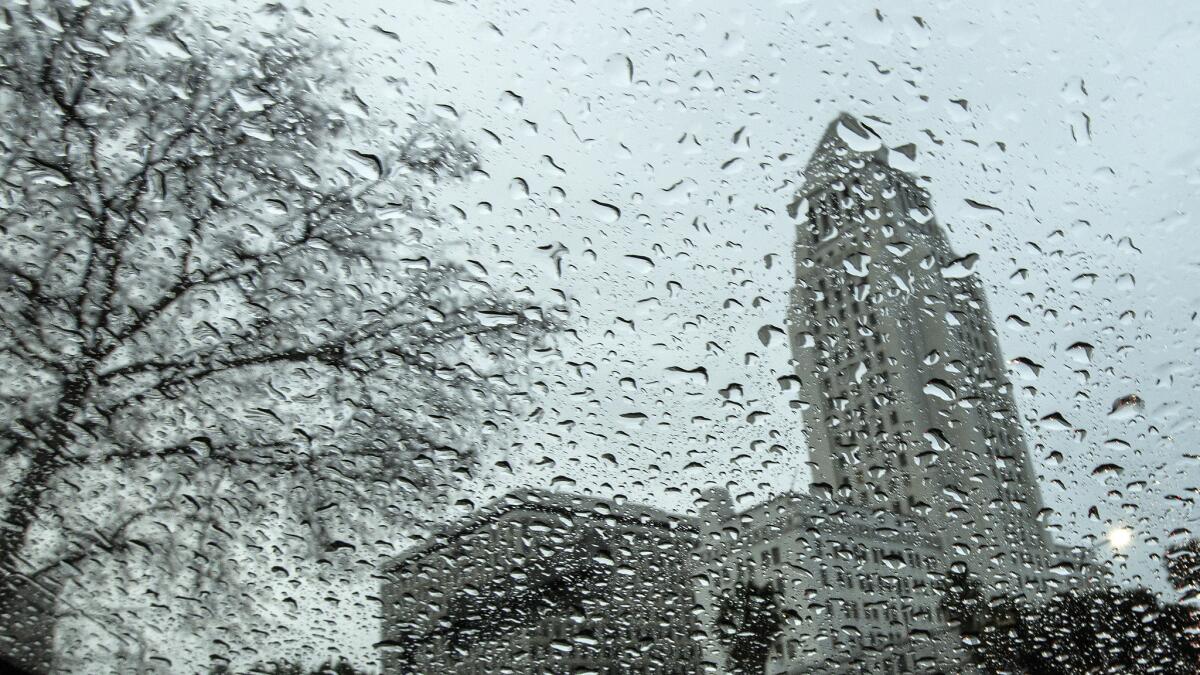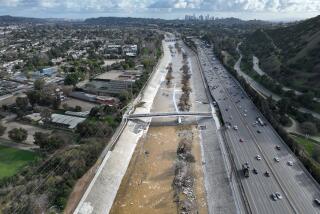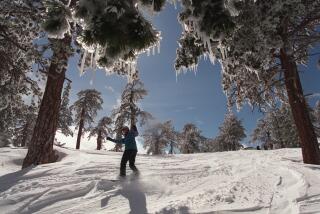Editorial: L.A. rain is nice, but does virtually nothing to help our water issues

Southern California’s March rain is a welcome relief, coming as it does after a mostly dry January and an absolutely desiccated February. Los Angeles, like much of the rest of the state, had been in drought and was getting by without severe conservation measures only because of reservoirs still brimming from the soaking winter of 2017 and a succession of moderately wet follow-ups.
We have a name for late winter storms that come at the end of mostly failed rainy seasons. We call them March Miracles. The granddaddy of them all came in 1991, when California was facing a desperate water shortage only to be hit by a late-March Sierra blizzard that packed a whole season’s worth of moisture into three days.
This week’s rain, while nice, is no March Miracle. It’s more of a March Meh.
That’s in part because the storm clouds moved too far south, so much of the moisture we thought we’d get in L.A. is going to Baja.
But even if more of it had fallen here, as first predicted, it’s not exactly what we need. It keeps the hillsides from drying out too much, and it’s good for the lawns and the gardens. But it’s not what our water supply network is set up for.
Southern California’s water system relies on Sierra snowpack. It’s great that it rains here, but we also need cold winter precipitation to the northeast of us to build up a sizable reservoir in the form of winter snow that melts steadily through the spring and summer to supply our rivers and aqueducts.
Our water comes mostly from Eastern Sierra snow that melts into creeks that feed the Owens River, which turns into Mulholland’s Los Angeles Aqueduct and snakes through the desert and into the San Fernando Valley; and from Western Sierra snowmelt that flows toward the San Francisco Bay but is diverted into the California Aqueduct and is pumped over the Tehachapi Mountains into reservoirs to the north and east of us. And we also rely on distant Rocky Mountain snow that feeds the Colorado River.
Much of the stuff that falls right here just flows out to the ocean — after picking up all kinds of urban gunk that fouls our beaches and pollutes our waves.
The situation is chock full of irony. As a legacy of the Spanish era, Los Angeles holds something known as pueblo rights. In the world of water law, that means that every drop that falls on the city — and most of the drops that fall within the watershed in which runoff flows to the city — belongs to the city. We don’t have to buy it from private water-rights holders either here or in distant parts of the state. And the San Fernando Valley is blessed with a giant aquifer, larger than any human-built reservoir and capable of holding much of the water we need.
But the aquifer is polluted from decades of industrial and household runoff. The Department of Water and Power has shifted strategies over the years — cleaning up the aquifer, or isolating the pollution plumes, or living with the fact that any water pulled from underground will have to go through advanced cleanup before being suitable for use. In any case, recovering the natural gift of the aquifer is a long, costly and continuing process.
Two years ago, L.A. County voters approved Measure W, a tax to capture and clean storm water before it can carry its urban detritus to the sea. It’s a solid beginning, but it will be years before the projects funded by the measure will capture sufficient water to help quench our thirst.
We will have to rely more and more on local efforts like these because of changing climate patterns. Warmer winters will mean shrinking Sierra snowpacks, which in turn means that winter precipitation will come more often in the form of rain that can’t be captured, because it will come too fast and can’t be stored, because reservoirs can’t hold it.
That’s something to keep in mind as we decide where to spend money on water projects. We will always have to rely at least in part on water imported from elsewhere in California. But in an era of March Meh, should we shore up a system built for 20th century snowpack, or build out a local system to capture and use what nature delivers right on top of our heads?
More to Read
A cure for the common opinion
Get thought-provoking perspectives with our weekly newsletter.
You may occasionally receive promotional content from the Los Angeles Times.










